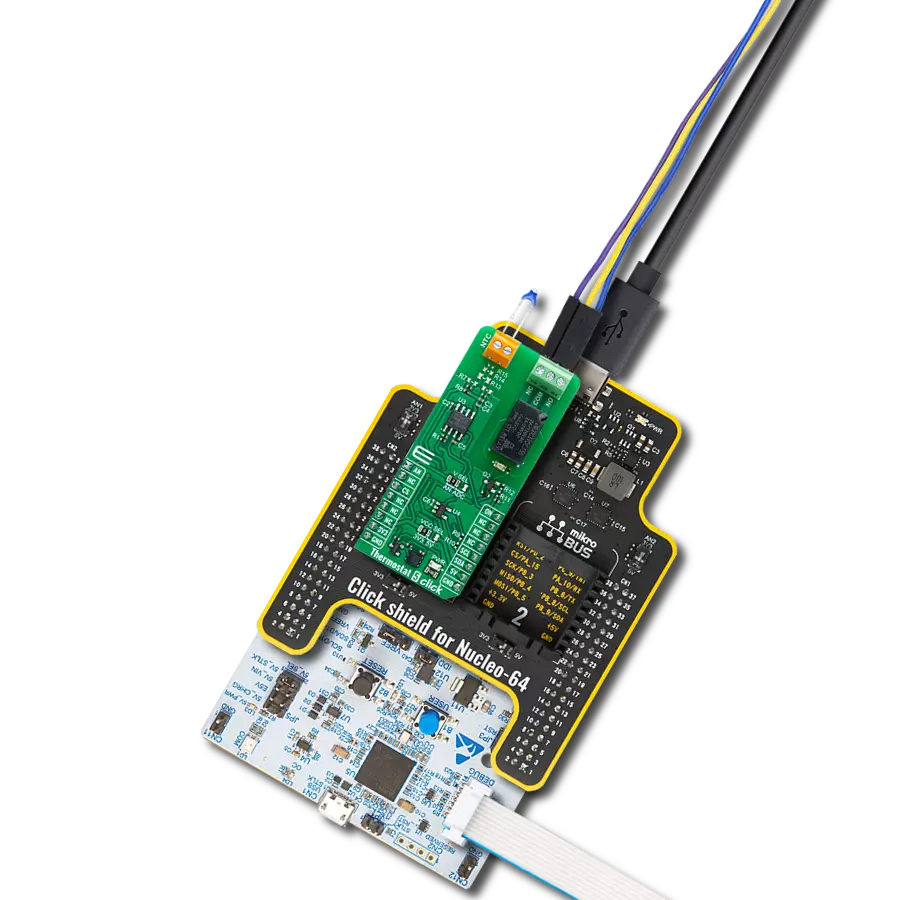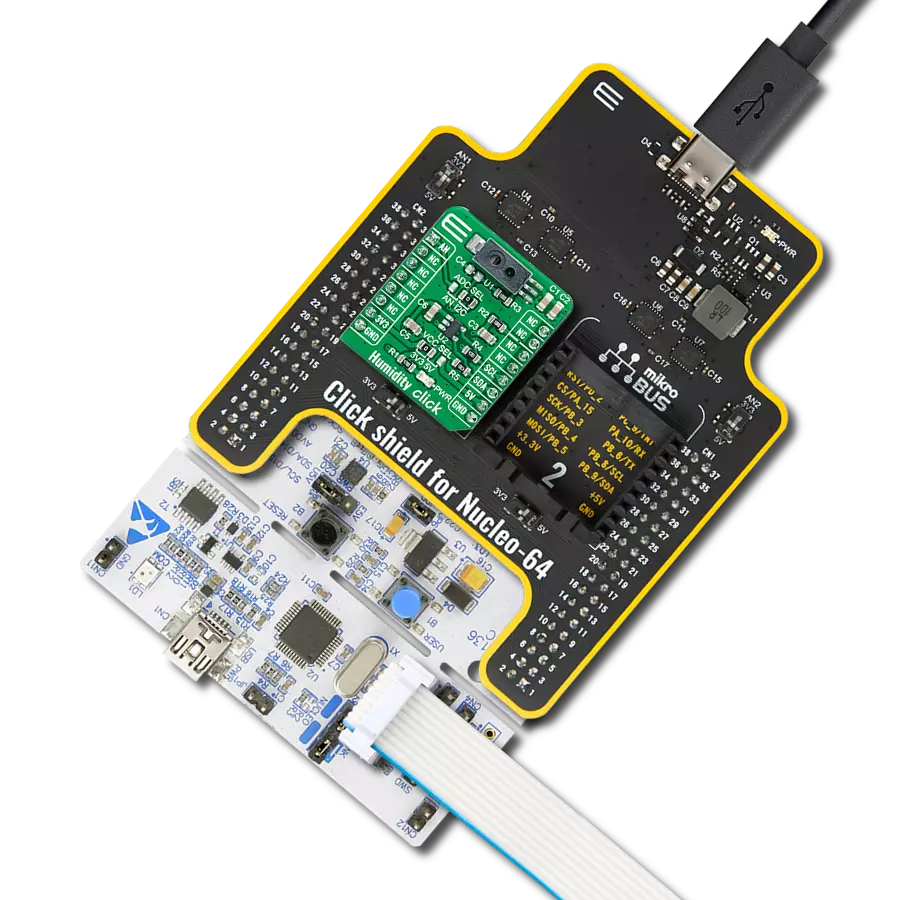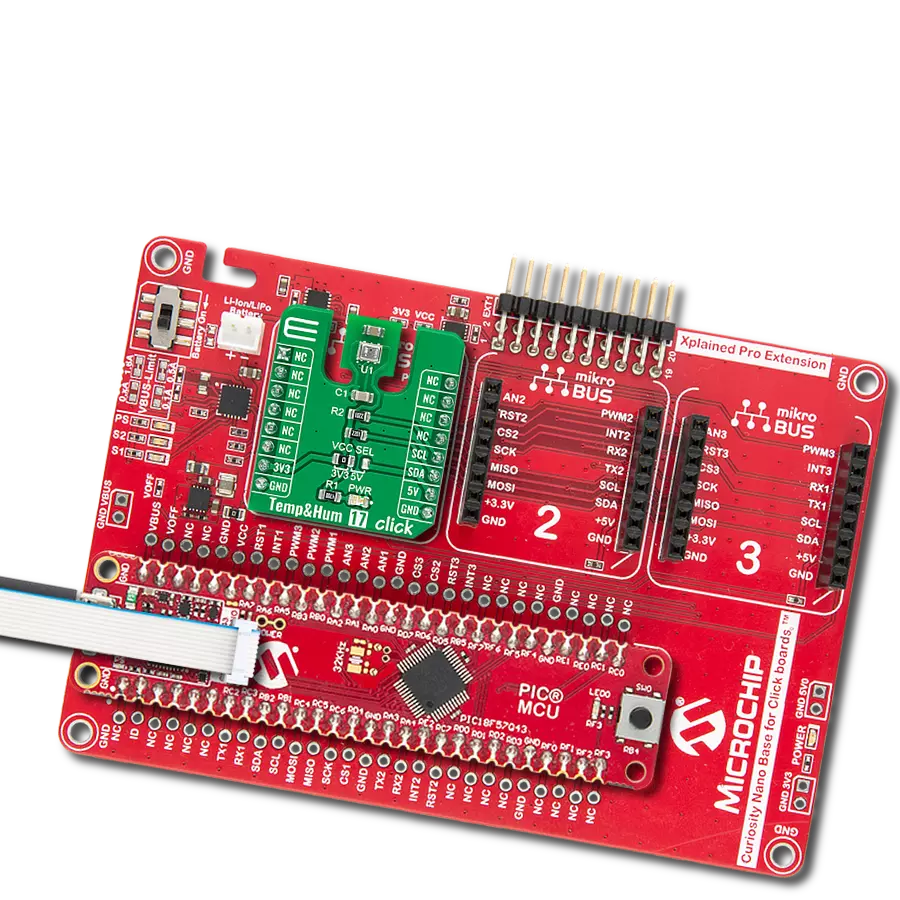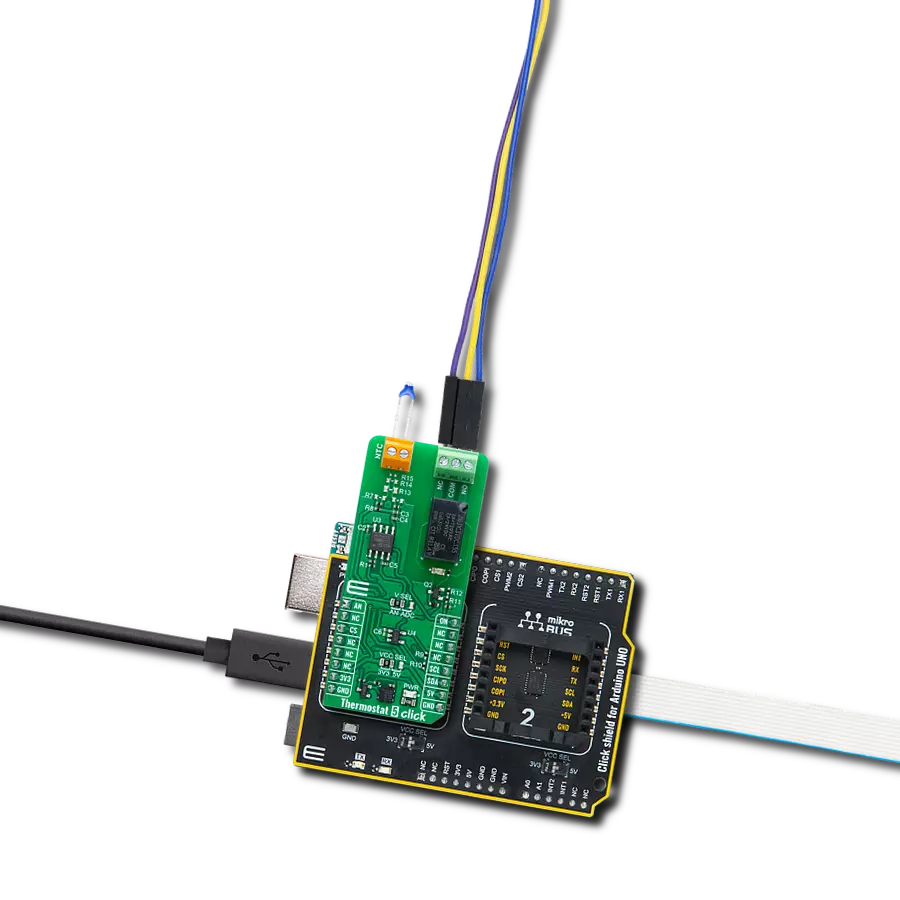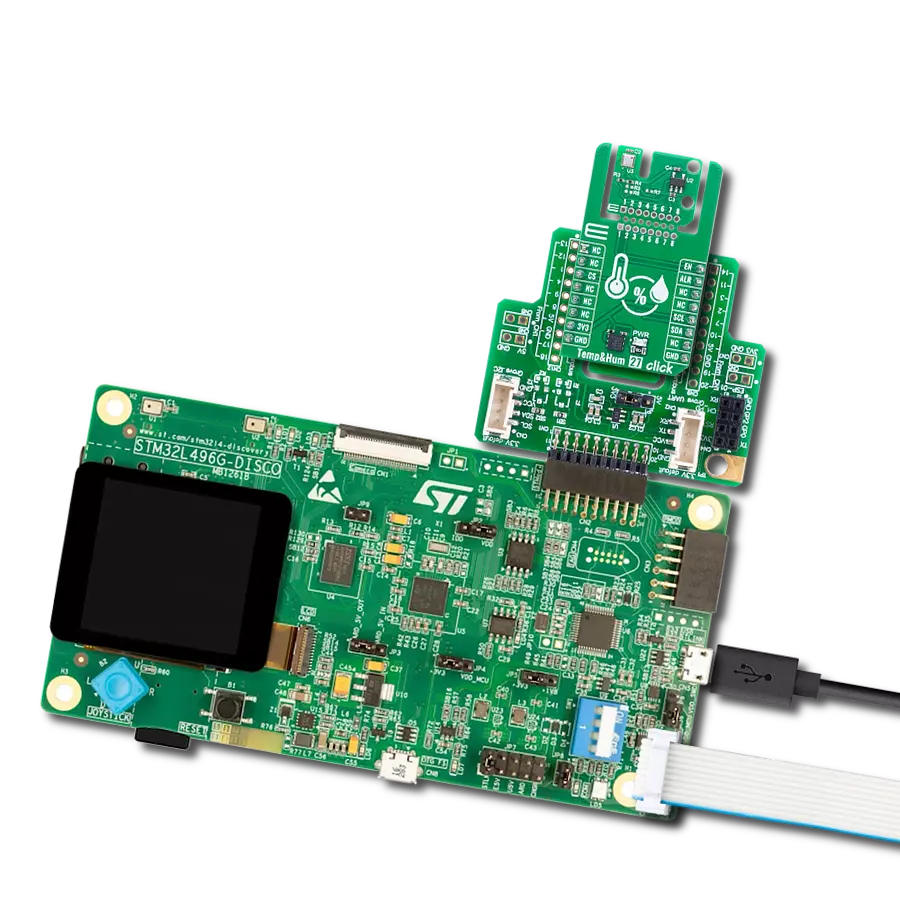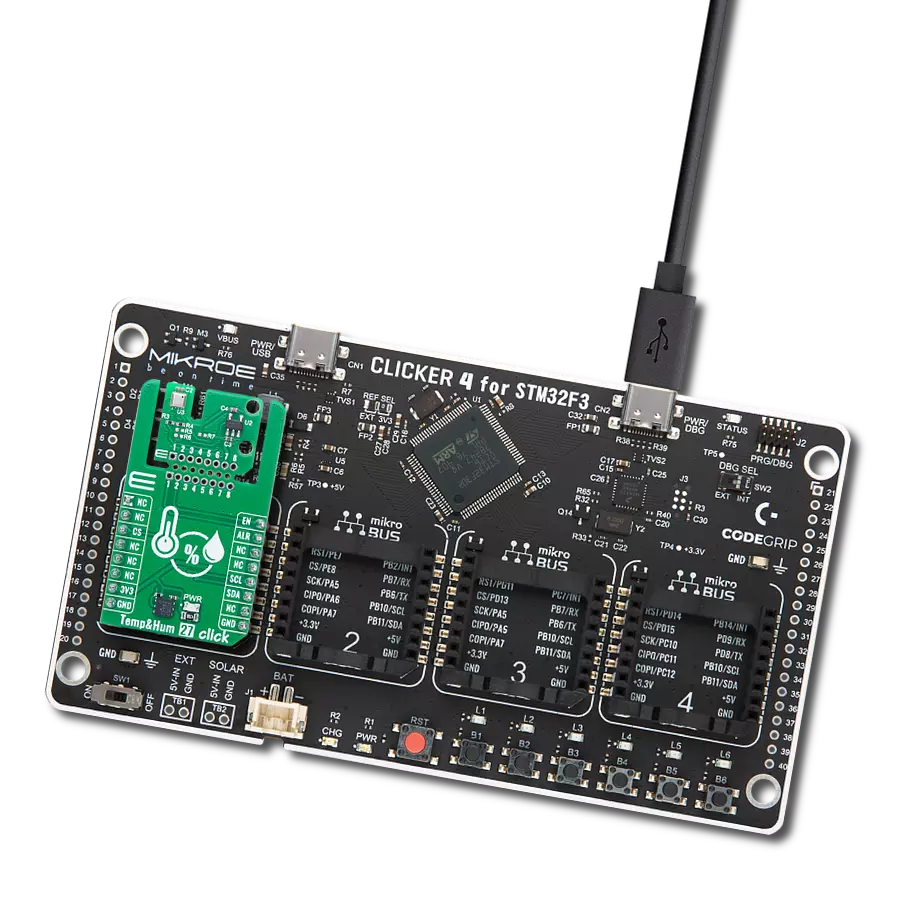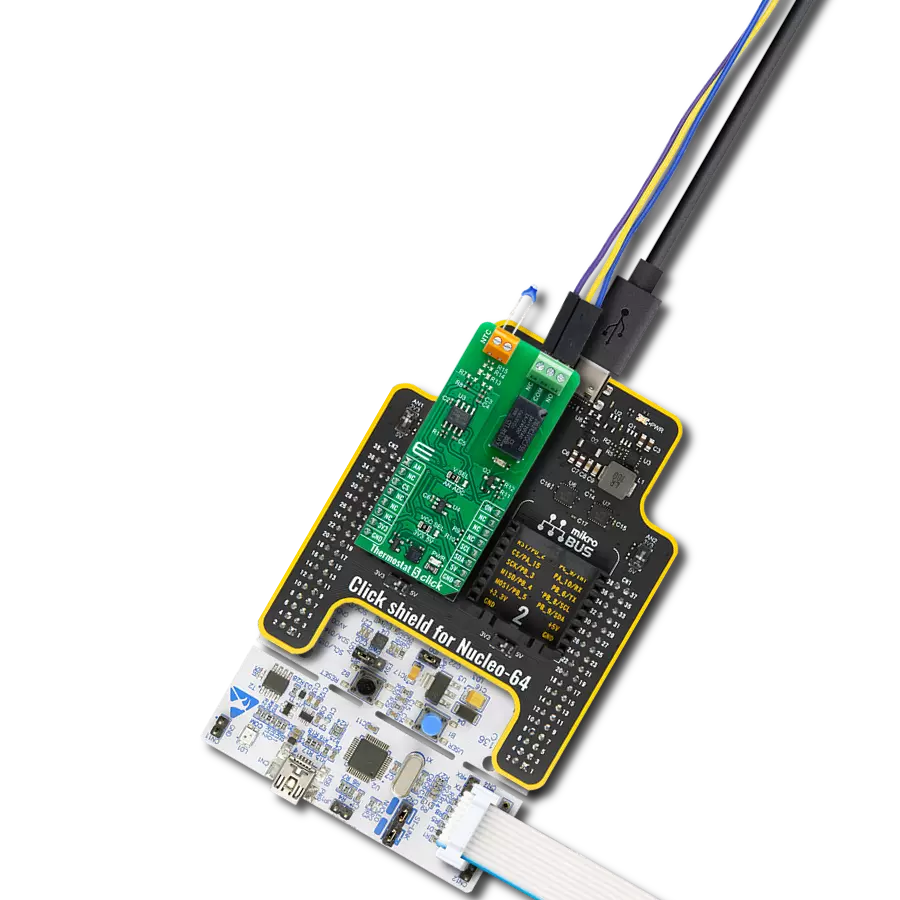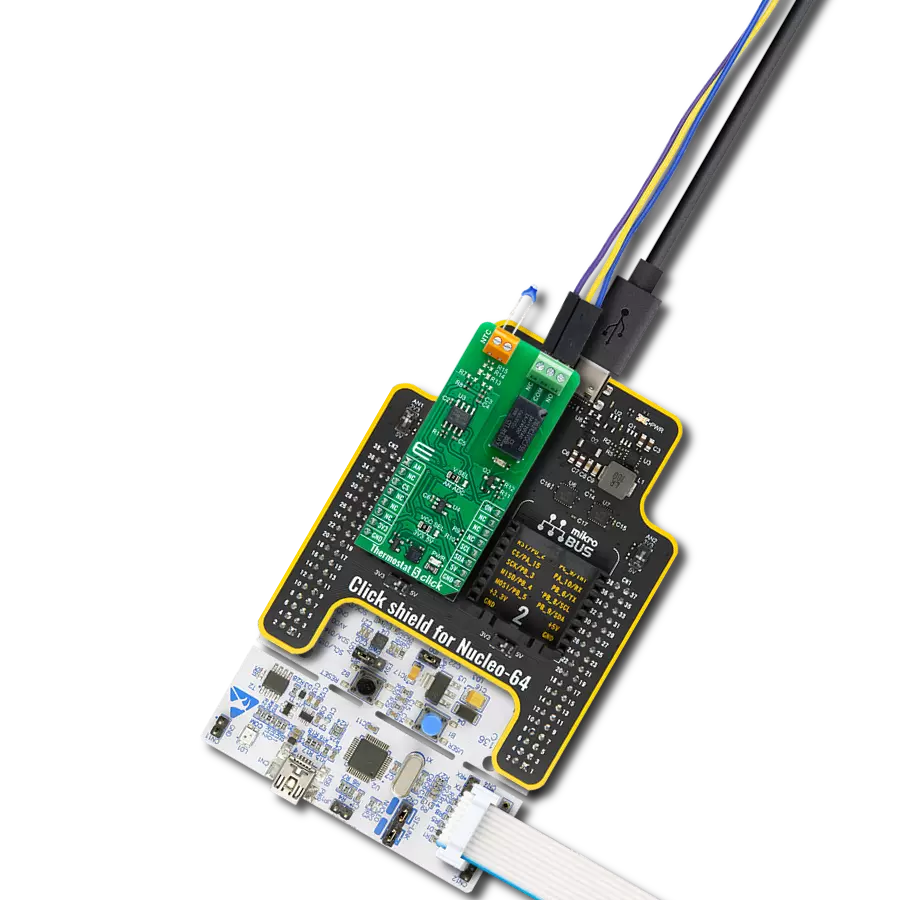温度控制的精通始于我们的RTD解决方案,精心制作用于PT100铂探头,为精度设定了新的基准。
A
A
硬件概览
它是如何工作的?
RTD Click基于Analog Devices的MAX31865,这是一款针对铂电阻温度探测器(RTD)进行优化的电阻到数字转换器。该点击板使用PT100型铂探头进行温度测量。板上有四个螺钉端子,因此可以使用不同类型的PT100探头设计。该点击板可以与2、3或4线PT100探头类
型一起使用。RTD探头通常用于测量−200°C到500°C范围内的温度,但确切的值取决于使用的具体探头。像15位ADC分辨率、输入端口过压保护(高达±45V)、故障检测、快速响应时间(21mS)和SPI接口等功能,使RTD Click成为在精确测量极高和极低温度时的理想选择。
此点击板只能使用3.3V逻辑电压级别操作。在使用具有不同逻辑电平的MCU之前,板必须执行适当的逻辑电压级别转换。此外,它配备了一个包含函数和示例代码的库,可用作进一步开发的参考。
功能概述
开发板
Curiosity PIC32 MZ EF 开发板是一个完全集成的 32 位开发平台,特点是高性能的 PIC32MZ EF 系列(PIC32MZ2048EFM),该系列具有 2MB Flash、512KB RAM、集成的浮点单元(FPU)、加密加速器和出色的连接选项。它包括一个集成的程序员和调试器,无需额外硬件。用户可以通过 MIKROE
mikroBUS™ Click™ 适配器板扩展功能,通过 Microchip PHY 女儿板添加以太网连接功能,使用 Microchip 扩展板添加 WiFi 连接能力,并通过 Microchip 音频女儿板添加音频输入和输出功能。这些板完全集成到 PIC32 强大的软件框架 MPLAB Harmony 中,该框架提供了一个灵活且模块化的接口
来应用开发、一套丰富的互操作软件堆栈(TCP-IP、USB)和易于使用的功能。Curiosity PIC32 MZ EF 开发板提供了扩展能力,使其成为连接性、物联网和通用应用中快速原型设计的绝佳选择。
微控制器概述
MCU卡片 / MCU
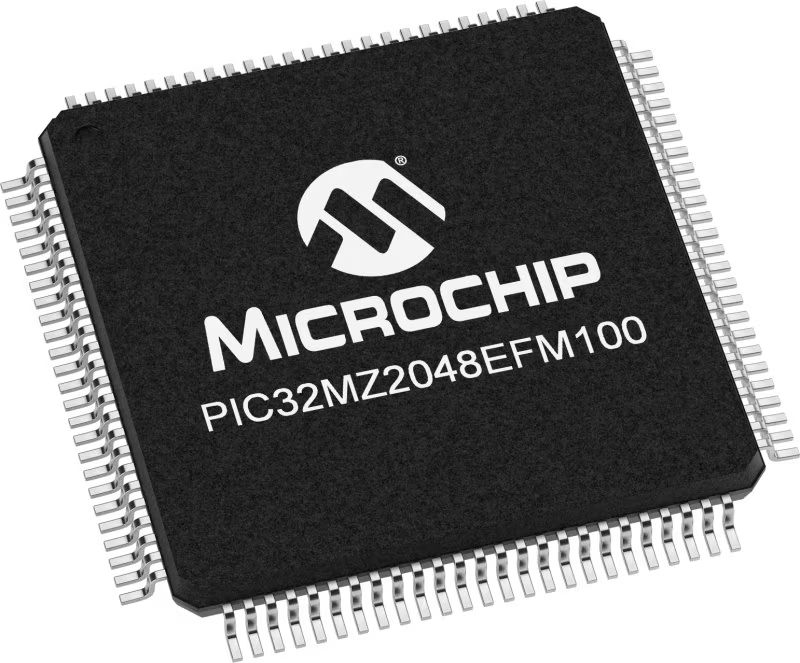
建筑
PIC32
MCU 内存 (KB)
2048
硅供应商
Microchip
引脚数
100
RAM (字节)
524288
你完善了我!
配件
PT100 3线温度探头是一种先进的RTD铂传感器,专为精确测量高达250°C的温度而设计。该探头与RTD Click板™完美兼容,利用RTD传感器 - 温度敏感电阻器,其电阻会随温度变化而改变。该探头的核心特点是精心制作的铂带,其在0°C时的电阻为100Ω,因此被称为PT100。主要特点包括高达250°C的温度范围,用于增强精度的3线配置,长度为1米(100厘米,3.37英寸),耐用的2B级构造以及0.5英寸的严格公差。无论是在工业还是科学领域,PT100 3线温度探头都能提供可靠且精确的温度读数,确保在各种应用中实现最佳性能。
使用的MCU引脚
mikroBUS™映射器
“仔细看看!”
Click board™ 原理图

一步一步来
项目组装
软件支持
库描述
该库包含RTD Click驱动程序的API。
关键函数:
rtd_read_register- 此函数从选择的寄存器中读取数据。rtd_read_temperature- 此函数从温度寄存器中读取数据。rtd_convert_temperature- 此函数将来自温度寄存器的数据转换。
开源
代码示例
完整的应用程序代码和一个现成的项目可以通过NECTO Studio包管理器直接安装到NECTO Studio。 应用程序代码也可以在MIKROE的GitHub账户中找到。
/*!
* \file
* \brief Rtd Click example
*
* # Description
* This app measures temperature and converts the data to celsius degrees.
*
* The demo application is composed of two sections :
*
* ## Application Init
* Initializes RTD Click driver, and sets the
* proper configuration mode for three wire RTD.
*
* ## Application Task
* Measures temperature, converts the data to celsius degrees,
* and displays it on the USB UART.
*
* \author MikroE Team
*
*/
// ------------------------------------------------------------------- INCLUDES
#include "board.h"
#include "log.h"
#include "rtd.h"
// ------------------------------------------------------------------ VARIABLES
static rtd_t rtd;
static log_t logger;
// ------------------------------------------------------ APPLICATION FUNCTIONS
void application_init ( void )
{
log_cfg_t log_cfg;
rtd_cfg_t cfg;
/**
* Logger initialization.
* Default baud rate: 115200
* Default log level: LOG_LEVEL_DEBUG
* @note If USB_UART_RX and USB_UART_TX
* are defined as HAL_PIN_NC, you will
* need to define them manually for log to work.
* See @b LOG_MAP_USB_UART macro definition for detailed explanation.
*/
LOG_MAP_USB_UART( log_cfg );
log_init( &logger, &log_cfg );
log_info( &logger, " Application Init " );
// Click initialization.
rtd_cfg_setup( &cfg );
RTD_MAP_MIKROBUS( cfg, MIKROBUS_1 );
rtd_init( &rtd, &cfg );
RTD_SET_DATA_SAMPLE_EDGE;
rtd_write_register( &rtd, RTD_CONFIGURATION, 0xD0 );
Delay_ms ( 100 );
log_info( &logger, " Application Task " );
}
void application_task ( void )
{
uint16_t read_value = 0;
float converted_value = 0;
read_value = rtd_read_temperature( &rtd );
converted_value = rtd_convert_temperature( &rtd, read_value, RTD_REF_RESISTANCE_470 );
log_printf( &logger, " Current temperature: %.2f \r\n", converted_value );
Delay_ms ( 300 );
}
int main ( void )
{
/* Do not remove this line or clock might not be set correctly. */
#ifdef PREINIT_SUPPORTED
preinit();
#endif
application_init( );
for ( ; ; )
{
application_task( );
}
return 0;
}
// ------------------------------------------------------------------------ END




















